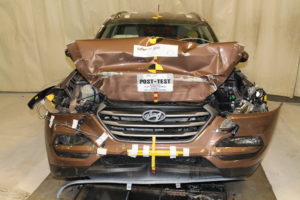
Vehicles in the US today are, on average, safer than they have ever been. I’ve written about the best kinds of vehicles for avoiding and surviving some of the most dangerous kinds of crashes, including rollovers and side impact collisions, and will continue to do so. However, there is still much work to be done in car safety, and in the safety of all travelers. Today’s post focuses on the passenger component of the small impact collision. More and more new vehicles on the market are acing the IIHS’ small overlap test, which impacts the front left quarter of the vehicle. However, the IIHS recently ran the same test on the right quarter of a number of small SUVs and found that nearly all of them performed worse there than they did on the left, traditionally tested end, where all were rated “good.”
What does this mean for your family?
It means that if you’re unlucky enough to get into a passenger-side small overlap collision, your passenger might far significantly worse than you’d expect given the severity of the crash and the “official” (driver’s side) small overlap score of your vehicle. It means your spouse, partner, teenager, adult child, or other loved one might not be as protected as s/he should be because your vehicle’s manufacturer cut corners, knowing that part of the vehicle would not be subject to IIHS or NHTSA testing.
This is serious. But how serious is it, in terms of relative risk compared to other collisions?
How many annual right small overlap passenger fatalities occur in the US?
The IIHS stated more than 1,600 right-front passenger fatalities occurred from frontal crashes in 2014. They did not distinguish between crashes that occurred from direct (head-on) frontal crashes, passenger-side moderate overlap frontal crashes, and passenger-side small overlap frontal crashes, however, not to mention driver-side moderate overlap or small overlap crashes that still resulted in front passenger fatalities, so this figure is not particularly useful, especially since they also note that 32,675 people died overall in 2014 due to vehicular collisions.
Digging into the numbers further, the IIHS also states that 65% of the 32,675 motor vehicle deaths that year involved occupants of motor vehicles, or 21,102. Of those 21,102 individuals, 27% were passengers, which suggests approximately 5,698 passengers died in motor vehicles that year. If 1,600 of those passengers sat in the right front seat, it suggests at least 28%, or more than 1/4th of passenger fatalities occur in that seat. However, we still are left without an answer regarding the number of individuals who lost their lives while riding as front-right passengers in passenger-side small overlap collisions.
We don’t know how much of a risk this is. But if it’s easy to prevent some portion of those 1,600 deaths, it’s worth looking into.
Which small SUVs were involved, and how did they score? Let’s take a closer look.
The IIHS looked at a total of 7 small SUVs. I recently named four of these as the best in their class for rollover resistance (the Mazda CX-5, Hyundai Tucson, Honda CR-V, and Toyota RAV4). All had recent “good” driver-side ratings in the IIHS small overlap test, but when tested on the passenger-side, only one, the Hyundai Tucson, also featured a good passenger small overlap rating. Three, the Encore, CR-V, and CX-5, featured “acceptable” scores; two, the Rogue and Forester, featured “marginal” scores; and one, the RAV4, featured a “poor” score.
Good small SUVs
The 2016 Tucson was the only vehicle the IIHS tested to feature a “good” small overlap score on the passenger side in addition to on the driver’s side. The Tucson was also one of the best small SUVs I found for all-around rollover protection. In light of its performance in this particular test, I have no issues describing it as the safest small SUV currently on the market.
My full 3 across car seat guide to the current Tucson is here.
Acceptable small SUVs
The Encore, which is the same vehicle as the Chevrolet Trax, was one of three vehicles to receive a good driver-side small overlap score but only an acceptable passenger-side equivalent score. While the IIHS only tested the 2015 Encore, I would also extend my rating to the 2016 Encore, as it has not had any significant changes in its structural design in the past year.
My full 3 across car seat guide to the Encore is here.
The current generation CR-V was described as having a symmetrical front undercarriage structure, and besides gaining an acceptable score for passenger-side small overlap protection, it also got a good score for an additional passenger-side moderate overlap test, which the IIHS found reassuring. Although the IIHS only looked at the 2015 CR-V, I’m extending my rating to the 2012-2016 years, as the last significant change to the CR-V occurred in 2012.
My full 3 across car seat guide to the CR-V is here.
Like the CR-V, the CX-5 also had a good driver-side small overlap score but only an acceptable one on the provision passenger-side test, indicating Mazda, like Honda, has work to do in this area. The CX-5 was the highest-rated small SUV in my list of rollover-resistant vehicles.
My full 3 across car seat guide to the CX-5 is here.
Marginal small SUVs
The Rogue already has the dubious distinction of being one of the few small SUVs that is currently 3 across incompatible due to overlapping seat belts, and on top of that, was also one of the worst performing SUVs tested by the IIHS in its provisional passenger-side small overlap screener. The IIHS noted that the Rogue appeared symmetrical when inspected, but had much more intrusion on the passenger end than they did on the driver’s end. Specifically, the IIHS stated there were 10 more inches of intrusion on the passenger-side compared to the driver-side in the Rogue, and that the door hinge pillar was completely torn off.
My explanation of car seat challenges related to the Rogue is here.
Like the Rogue, the Forester also had a disappointing performance in the passenger-side small overlap test, which is surprising given Subaru’s recent touting of the safety of their vehicles. Ideally, they’ll correct this, and soon. The IIHS noted that the Forester, like every SUV on the list besides the Rogue and RAV4, appeared symmetrical when inspected, but had much more intrusion on the passenger end than it did on the driver’s end.
My 3 across guide to the Forester is here.
Poor small SUVs
The only small SUV to score poorly in this preliminary passenger-side small overlap test was the RAV4. The IIHS noted that the RAV4 was one of only two asymmetrically structured vehicles they tested (the other being the Rogue), and was the worst performing vehicle on the list with the greatest amount of passenger-side intrusion. In particular, there were 13 more inches of intrusion on the passenger-side when tested than on the driver-side. Additionally, the passenger door opened during the collision, which would have placed the passenger at a much higher risk of ejection from the vehicle. This is completely unacceptable, and Toyota needs to work on this immediately.
My 3 across guide to the RAV4 is here.
How do I keep my passengers safe if I don’t drive one of the “good” or “acceptable” vehicles on this list?
This is a great question. As of today, the IIHS has only released passenger-side small overlap crash test information for 7 small SUVs, which represents a small fraction of currently available vehicles. My advice for families who don’t drive one of the 4 vehicles rated “good” or “acceptable” on this list would be to stick with the basics of driving safely. In particular, making sure every occupant is buckled on every drive, only driving with a 0.00% BAC, and driving the speed limit every single time will make your occupants safer than those of 90% of vehicle occupants on the road.
Will the IIHS begin to test all vehicles for passenger-side small overlap performance?
Yes! The IIHS suggested a ratings program for passenger-side small overlap tests would resolve the tendencies of manufacturers to cut corners on passenger-side small overlap performance. They hinted at starting a testing program in 2017, and making good or acceptable performance on such a test a requirement for a safety award as soon as in 2018, two years away. Whether they will do this remains to be seen, but I’d rate the likelihood as high, given the IIHS’ penchant for devising new testing programs and continually raising the bar for their Top Safety Pick awards.
—
If you find the information on car safety, recommended car seats, and car seat reviews on this car seat blog helpful, you can shop through this Amazon link for any purchases, car seat-related or not. Canadians can shop through this link for Canadian purchases.

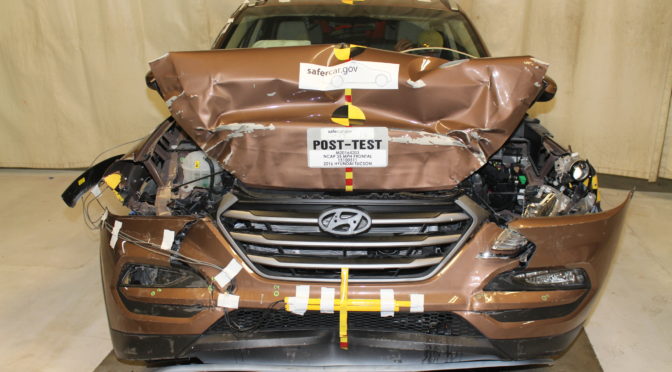
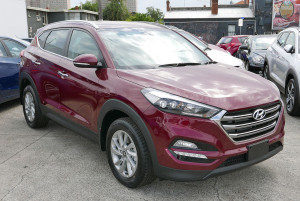
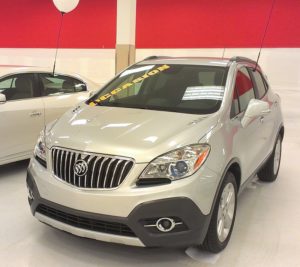
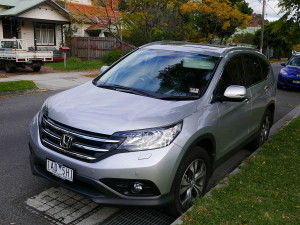
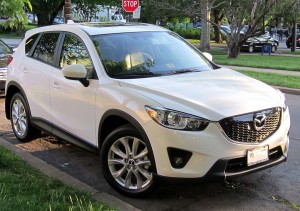
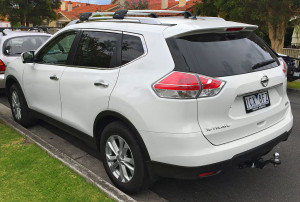
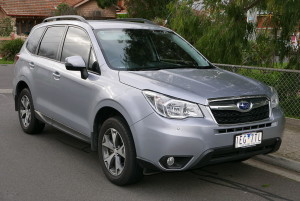
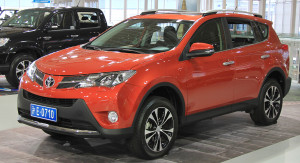 2013-2016 Toyota RAV4
2013-2016 Toyota RAV4